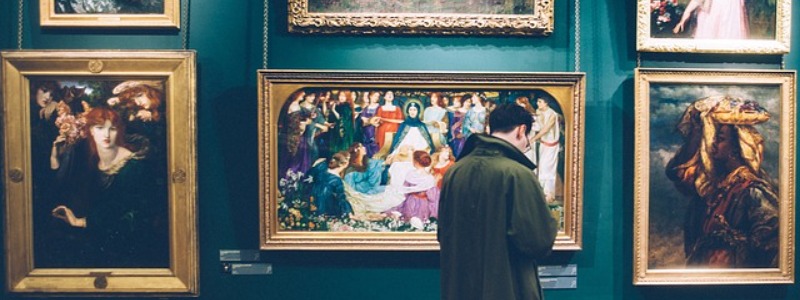What makes a museum different from any other? Is it the collection, the people, or the building? Or is it the atmosphere and how it brings people together to enjoy the pieces it displays?
I don’t know the answer; the only thing I know is that the Museum of Fine Arts, Houston is the driving force of community programs for the area and, above all else, an exciting place where studio art, decorative art, sculpture, gardens, and fine arts come together in the 300,000 square foot space.
This museum, which is the largest art museum in the country south of Chicago, west of Washington D.C., and east of Los Angeles, is also home to one of the largest art libraries in the Southwest and to permanent collections that include nearly 63,000 works of art from all periods and significant civilizations. However, the more than thirty changing exhibitions a year and the community programs that run alongside them are the real draw to this special place.
Take, for instance, the current exhibit on German impressionism, a milieu that in and of itself seems like an oxymoron: impressionism is generally considered a French movement, evoking names like Monet, Renoir, and Morisot, not Liebermann, Corinth, and Slevogt. But what most fail to notice is that the Museum of Fine Arts brings into the limelight the works of German artists who took an interest in this 19th-century development in the world of French art.
This exhibit is one of the first in the United States and features more than 90 works, including paintings by Max Liebermann, sometimes called “the German Manet.” Liebermann is widely appreciated as the leader of this generation of German painters, along with Lovis Corinth and Max Slevogt, who made up the “triumvirate of German Impressionism.” These painters were often snubbed by their French counterparts. Still, the short-lived German movement produced essential works of art that reflect the politics of the time: with the outbreak of World War I in Germany, the painters’ landscape choices are very telling regarding the political climate. Liebermann, for example, produced hundreds of paintings of his garden in Wannsee when the Occupation rendered him unable to visit Holland, a country that had often inspired him. The result of these political boundaries invites comparison to Monet’s work in his garden in France; the later careers of both of these painters move further and further into the ideals of impressionism—especially the fleeting capture of reality—something that is especially apparent with the German painter’s work, as he was less devoted to the movement at the beginning of his career. His paintings from the 1910s predate expressionism, and yet the wild brushstrokes that merely suggest an image, offering it to the viewer’s imagination instead of spilling it all out at once onto canvas, foreshadow the artistic movement that would arrive in the next few years.
Along with this unique exhibit, the Museum of Fine Arts Houston offers an even more fantastic opportunity to hear more about the movement: gallery talks take place every Thursday and Sunday (except for Thanksgiving) throughout November, though the exhibition will stay open through December 5th.
Museum of Fine Arts, Houston 1001 Bissonnet at Main Houston, Texas 77005







